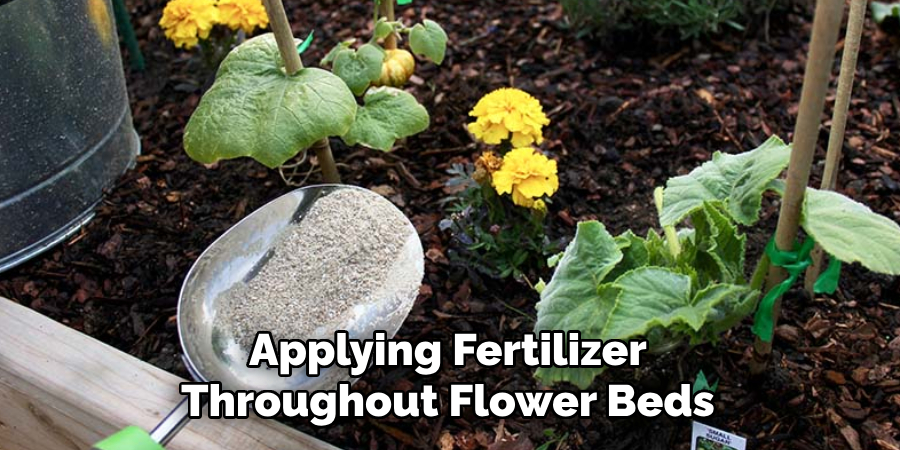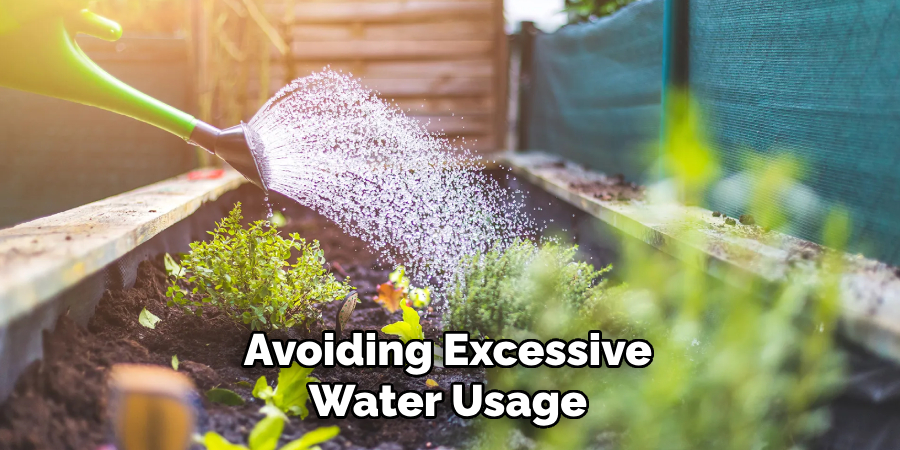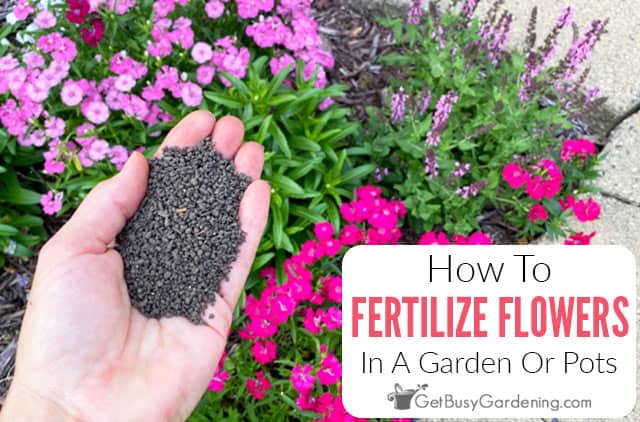To fertilize flower beds, first, prepare the soil by removing weeds and loosening it with a garden fork. Then, apply a slow-release fertilizer evenly over the bed.

Credit: ag.umass.edu
How to Fertilize Flower Beds: Detailed Guide
1. Choosing The Right Fertilizer
When selecting a fertilizer for your flower beds, there are a few factors to consider. First, understanding the nutrient requirements of your flowers is crucial. Each plant has specific needs for growth and blooming. Next, it’s important to determine the appropriate npk ratio for your flower beds.
The npk ratio refers to the ratio of nitrogen (n), phosphorus (p), and potassium (k) in the fertilizer. Different plants have different preferences for these nutrients. By choosing the right fertilizer with the correct npk ratio, you can ensure healthy growth and vibrant blooms in your flower beds.
Take the time to research and consider these factors before fertilizing your flower beds to achieve the best results.
1.1 Organic Vs. Inorganic Fertilizers
Organic and inorganic fertilizers have their own set of advantages and disadvantages for flower beds. Organic fertilizers are derived from natural sources, such as compost or manure, and are environmentally friendly. They provide slow-release nutrients, improve soil structure, and enhance microbial activity.
However, they might take longer to show results and can be more expensive. On the other hand, inorganic fertilizers, also known as synthetic or chemical fertilizers, deliver quick results and can be cost-effective. They are formulated with specific nutrient ratios and are easily absorbed by plants.
However, they are derived from non-renewable resources, can harm beneficial soil organisms, and may cause nutrient imbalances. Deciding which type of fertilizer to use depends on your preferences, budget, and the specific needs of your flower beds. Considerations such as nutrient requirements, environmental impact, and long-term soil health should guide your decision-making process.
1.2 Slow-Release Vs. Quick-Release Fertilizers
When fertilizing flower beds, it’s essential to understand the differences between slow-release and quick-release fertilizers. Each type has its advantages and disadvantages, which should be carefully evaluated. Slow-release fertilizers provide a steady supply of nutrients over an extended period, while quick-release fertilizers provide an immediate nutrient boost.
The choice of fertilizer release method depends on the specific needs of your flower beds. Consider factors such as the type of plants and their growth rate. Slow-release fertilizers may be more appropriate for long-term nourishment, while quick-release fertilizers can address immediate nutrient deficiencies.
It’s crucial to select the most suitable option to ensure your flower beds receive the optimal level of nutrients for healthy growth.
2. Proper Application Techniques
Properly fertilizing flower beds is essential for healthy plant growth. Before applying fertilizer, it is important to prepare the flower beds. Start by calculating the correct amount of fertilizer needed based on the size of the bed and the specific type of plants.
Next, distribute the fertilizer evenly throughout the beds to ensure that all plants receive their fair share. Avoid applying too much fertilizer, as this can lead to nutrient burn and damage the plants. Instead, use a spreader or your hands to sprinkle the fertilizer uniformly across the bed.
Take care to avoid concentrating the fertilizer near the plant stems, as this can also cause harm. By following these proper application techniques, you can provide the necessary nutrients for your flower beds, promoting vibrant blooms and healthy growth.
2.1 Even Application Method
Evenly applying fertilizer throughout flower beds is important for optimal growth and health. Achieving uniform distribution involves a few techniques. First, spread the fertilizer evenly by using a spreader or hand broadcasting method. Make sure to cover the entire bed, avoiding clumps or gaps.

Second, adjust the spreader settings according to the product’s instructions to ensure the right amount of fertilizer is applied. This will help avoid over or under fertilization. Lastly, consider using a crisscross pattern when applying the fertilizer to ensure complete coverage.
By following these tips, you can ensure that your flower beds receive the nutrients they need for vibrant and healthy blooms.
2.2 Timing And Frequency
Timing and frequency are crucial factors in fertilizing flower beds. Understanding the optimal time to fertilize is essential. Different types of flowers have different fertilization schedules. It’s important to consider these variations. Additionally, the frequency of fertilization should be determined based on several factors.
The growth rate of the flowers and the nutrient requirements should be taken into account. Moreover, the soil conditions and weather conditions should also be considered. Regular monitoring of the flower beds can help in determining when fertilization is needed.
In conclusion, by understanding the timing and frequency of fertilization, you can ensure healthy and vibrant flowers in your flower beds. So make sure to follow a suitable schedule to keep your flowers thriving.
3. Implementing Best Practices
Proper watering practices are essential for maintaining healthy flower beds after fertilization. Keep an eye out for any signs of nutrient deficiencies or excesses, such as yellowing leaves or stunted growth. These indicators can help you adjust your fertilizer application accordingly.
You want to ensure that your plants receive the right amount of water to encourage optimal growth and prevent any overwatering issues. Remember to water deeply and consistently, providing enough moisture for the entire root system. Avoid shallow watering, as it can lead to weak root development.
By monitoring your plants’ growth and health and adjusting your watering practices accordingly, you can maximize the benefits of fertilizing your flower beds.
3.1 Watering Strategies
Watering strategies play a crucial role in enhancing the absorption of fertilizers in flower beds. One effective method is utilizing irrigation systems properly, ensuring a consistent and adequate water supply. This prevents both water runoff and leaching of nutrients, maximizing the fertilizer’s benefits.

By avoiding excessive water usage, the nutrients can be absorbed by the plants without being wasted. A balanced approach to watering not only saves water but also improves the overall health and growth of the flowers. Consistency is key, maintaining a regular watering schedule without overwatering or underwatering.
By following these techniques, gardeners can ensure that the fertilizers are efficiently absorbed by the flower beds, promoting vibrant and healthy blooms.
3.2 Observing And Responding To Plant Needs
As a seo content writer, i will provide you with a concise paragraph on how to fertilize flower beds by observing and responding to plant needs. Identifying common nutrient deficiency symptoms in flowers is the first step. By carefully observing the plants, you can determine if they lack certain nutrients.
Once you have identified the deficiencies or excesses, you can take appropriate actions. This may involve modifying your fertilizer program based on the plant’s response and overall health. By addressing nutrient deficiencies or excesses, you can ensure that your flower beds thrive and display healthy growth and vibrant blooms.
Remember to keep an eye out for any signs of nutrient imbalances and make the necessary adjustments to provide your flowers with the best care possible.
Frequently Asked Questions On How To Fertilize Flower Beds
How Often Should I Fertilize My Flower Beds?
You should fertilize your flower beds every 4 to 6 weeks during the growing season. This will provide the necessary nutrients to keep your flowers healthy and vibrant. Be sure to follow the instructions on the fertilizer packaging for proper application.
What Type Of Fertilizer Is Best For Flower Beds?
A balanced, slow-release fertilizer with a ratio of 10-10-10 or 14-14-14 is ideal for flower beds. This will provide a good mix of nitrogen, phosphorus, and potassium, which are essential for healthy plant growth. Avoid using high-nitrogen fertilizers, as they can promote excessive foliage growth at the expense of flowers.
How Should I Apply Fertilizer To My Flower Beds?
When applying fertilizer to your flower beds, it’s important to follow the instructions on the packaging. Generally, you’ll want to sprinkle the granules evenly over the soil surface, avoiding direct contact with the leaves and stems of the plants. Afterward, water the area thoroughly to help the fertilizer penetrate the soil.
Can I Use Organic Fertilizers In My Flower Beds?
Yes, organic fertilizers can be used in flower beds. They are derived from natural sources and promote soil health and long-term plant growth. Examples include compost, well-rotted manure, and bone meal. Organic fertilizers release nutrients slowly, providing a steady supply to your flowers without the risk of burning or leaching excess chemicals into the soil.
Should I Fertilize My Flower Beds In Winter?
No, it is not recommended to fertilize your flower beds in winter. Most plants are dormant during this time, and applying fertilizer could stimulate new growth that is vulnerable to frost damage. It’s best to wait until spring when the plants start actively growing again before applying fertilizer.
Conclusion
Fertilizing flower beds is an essential step in maintaining a healthy and vibrant garden. By understanding the specific needs of your flowers and using the right type of fertilizer, you can promote strong growth, bright blooms, and overall plant health.
Remember to follow the recommended application rates and timing, as well as incorporating organic matter into the soil for long-term benefits. Regular monitoring of your plants’ health and adjusting your fertilizer application accordingly will help prevent any nutrient deficiencies or excesses.
Additionally, proper watering and mulching techniques can further enhance the effectiveness of the fertilizer. By taking these steps, you can create a beautiful and thriving flower garden that will be the envy of your neighbors. So go ahead and give your flower beds the nourishment they need, and enjoy the rewards of a flourishing garden all season long.

